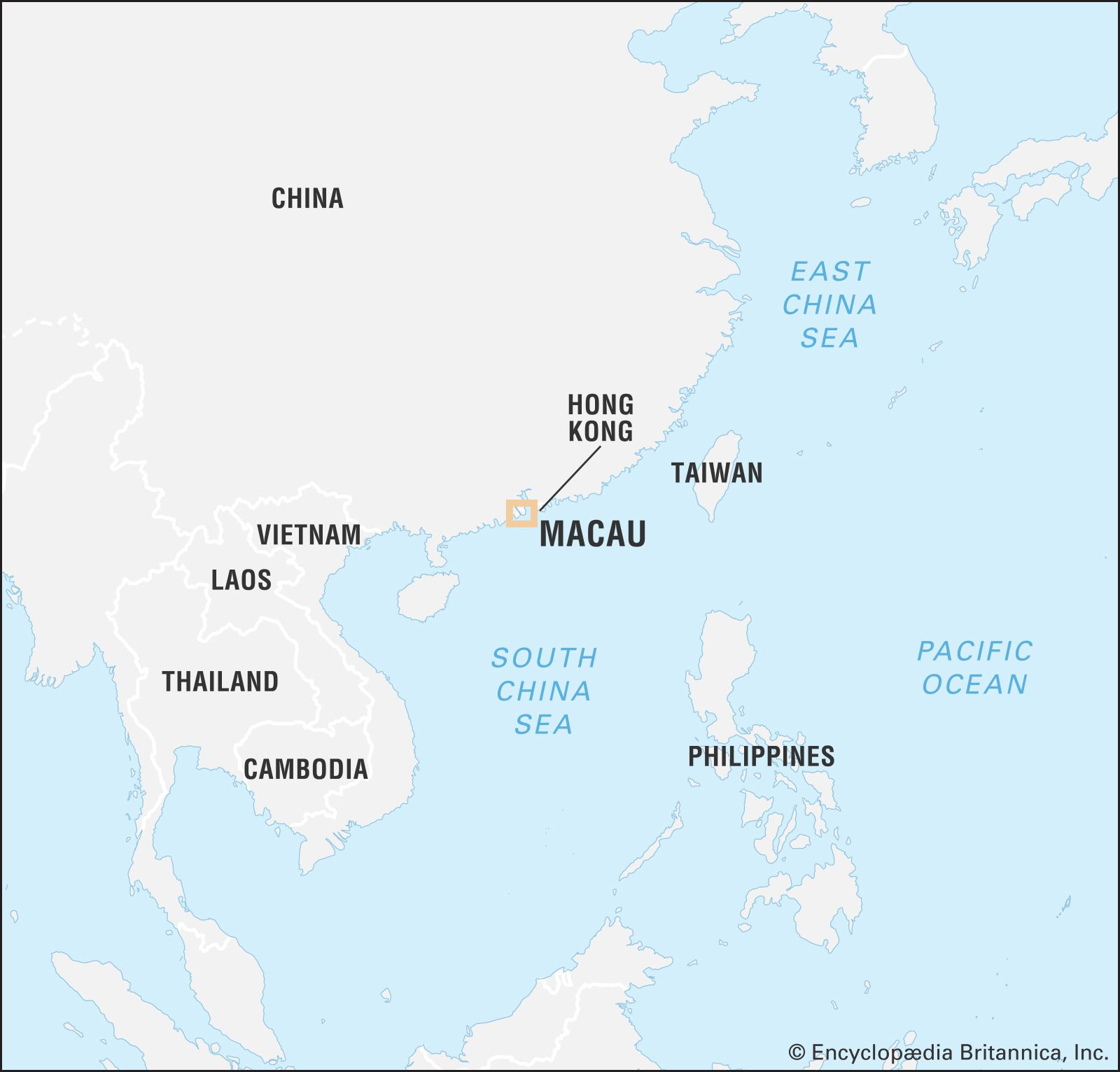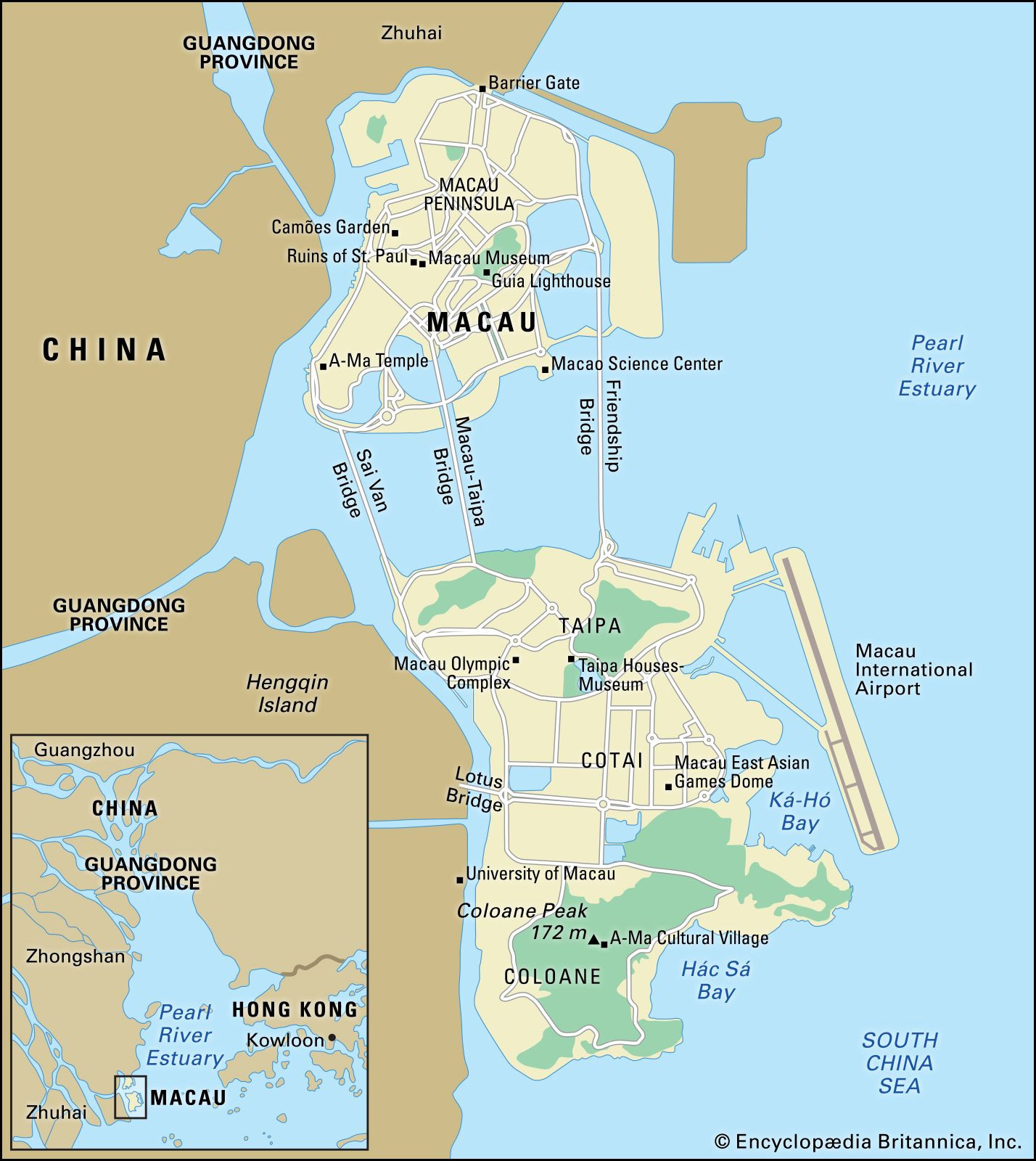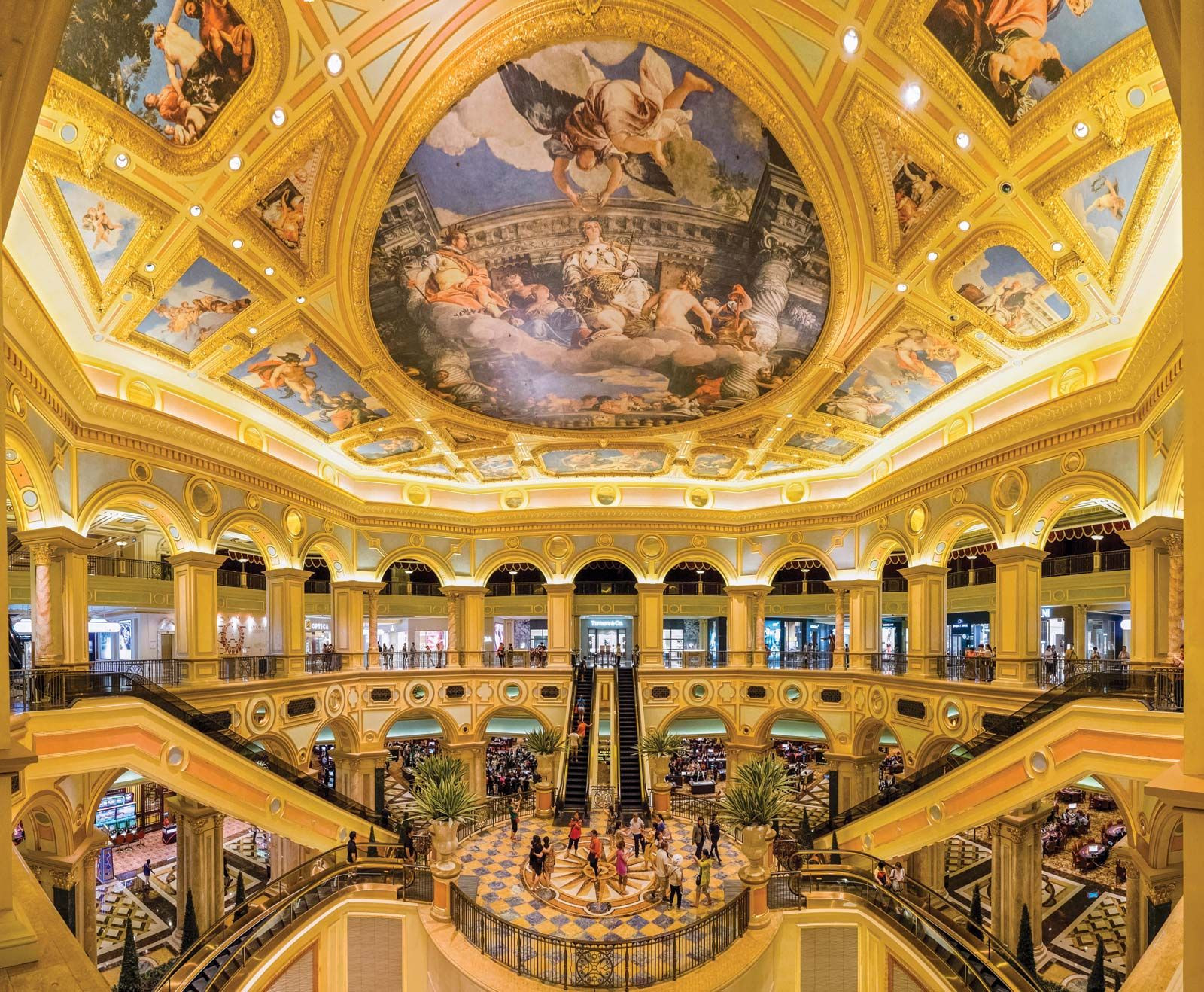Macau, often glittering in the global spotlight for its casinos and unique blend of cultures, frequently prompts the question: “Where Is Macau Country?” This isn’t simply a matter of geography, but also one of political identity and history. Understanding Macau requires delving into its specific status and location within the complex geopolitical landscape of Asia.
Macau is not a country in the traditional sense. Instead, it is officially known as the Macao Special Administrative Region of the People’s Republic of China. This designation, often abbreviated as Macau SAR, highlights its unique position: it is a region within China, but one that enjoys a high degree of autonomy in its governance and economy, operating under the principle of “one country, two systems.”
Geographically, Macau is situated on the southern coast of China, specifically at the southwestern edge of the Pearl River Delta. This places it in close proximity to another significant Special Administrative Region, Hong Kong, which lies approximately 60 kilometers (about 40 miles) to the east, across the Pearl River estuary. The location is strategically important, historically serving as a gateway between East and West.
Macau itself is composed of the Macau Peninsula and two main islands, Taipa and Coloane. These islands are now connected by reclaimed land, known as Cotai, which has become the heart of Macau’s famous Cotai Strip, lined with massive resorts and casinos. The city of Macau, the urban center, occupies most of the peninsula, extending up the hillsides.
 Macau Special Administrative Region Location in China
Macau Special Administrative Region Location in China
The name “Macau” itself has intriguing origins, derived from “Ama-gao” or “Bay of Ama,” in honor of Ama, the sea goddess and patron deity of sailors. This name reflects Macau’s historical connection to maritime trade and its cultural roots.
Delving Deeper into Macau’s Geography and Land
The landscape of Macau is characterized by a mix of hilly terrain and limited flatland. Both the peninsula and island areas are formed by small granite hills. Originally covered in lush evergreen tropical forests, much of the natural vegetation was cleared over time for resources and construction. Despite its hilly nature, Macau’s elevation is modest, with Coloane Peak on Coloane Island being the highest point at 172 meters (565 feet). The area is naturally devoid of permanent rivers, relying on rainwater collection and pipelines from mainland China for its water supply.
Macau experiences a monsoonal climate, typical of its location just within the tropics. A significant portion of its rainfall, roughly four-fifths of the annual average of 2,120 mm (83 inches), occurs during the summer rainy season from April to September, coinciding with the southwest monsoon. Summers in Macau are hot, humid, and often uncomfortable, with temperatures reaching around 29°C (84°F). Winters, in contrast, are milder and drier, with temperatures dropping to about 15°C (59°F), and are generally considered more pleasant.
 Macau Landscape with Bridges
Macau Landscape with Bridges
The bridges visible in the image are crucial infrastructure, linking the Macau Peninsula to the islands of Taipa and Coloane, facilitating movement and development across the region.
The People and Cultural Tapestry of Macau
Macau’s population is overwhelmingly composed of ethnic Chinese, primarily Cantonese speakers, many of whom were born either in Macau or mainland China. Within this Chinese majority, a small number speak Hakka. Historically, there was a significant Portuguese minority, but this has diminished to a small fraction of the population today. However, the legacy of Portuguese influence is deeply embedded in Macau’s culture and official languages.
Both Chinese (Cantonese) and Portuguese are recognized as official languages in Macau. English is also widely spoken, particularly in the tourism and business sectors, reflecting Macau’s international connections.
In terms of religion, Buddhism is the dominant faith in Macau. Many residents also adhere to Taoism and Confucianism, often blending these three traditions. Christianity, primarily Roman Catholicism due to Portuguese colonial history, has a presence, although it represents a smaller proportion of the population. A notable segment of the population identifies with no religious affiliation.
Macau is renowned as one of the most densely populated places globally, and its entire population is classified as urban, reflecting its highly developed and compact nature. Interestingly, Macau’s population is relatively older, with a smaller proportion of young people under the age of 25 compared to other regions.
Macau’s Economy: Beyond Gambling
The service sector is the cornerstone of Macau’s economy, employing a large majority of its workforce. While natural resources are scarce, the Pearl River estuary does provide some fish for local consumption. Agriculture is minimal, with only small-scale vegetable farming and poultry raising.
Macau operates as a free port, making trade a vital economic activity. Mainland China is a major trading partner, supplying food and consumer goods. A trade agreement with China in 2004, eliminating tariffs on many Macau goods, boosted exports to the mainland. Macau’s imports include raw materials, semi-finished goods for manufacturing, machinery, and petroleum for power generation, although a significant portion of its power needs is imported from Guangdong.
Apparel and textile fabrics are key exports, and re-exports contribute meaningfully to the total export value. China is Macau’s primary trading partner, with significant trade also occurring with the United States and Hong Kong. Macau became a member of the General Agreement on Trade and Tariffs (GATT) in 1991, now the World Trade Organization (WTO).
 Casino Interior in Macau
Casino Interior in Macau
Despite efforts to diversify, tourism and gambling remain central to Macau’s economy. It serves as a major entertainment destination, particularly for visitors from nearby Hong Kong and mainland China. High-speed ferries and river services connect Macau to Hong Kong and Shenzhen, bringing tourists to its casinos, hotels, and attractions. Since its transfer to China in 1999, Macau has maintained its status as a free and open port, further facilitating its economic activities. The opening of an international airport in 1995 enhanced its connectivity to the world.
Government and Society in Macau SAR
Before becoming a SAR of China in 1999, Macau was under Portuguese administration, following a colonial constitution established in 1976. With the transfer of sovereignty, the Basic Law of the Macau Special Administrative Region came into effect, enshrining the “one country, two systems” principle. This framework allows Macau to maintain its capitalist economy and a degree of political autonomy for 50 years, while foreign policy and defense remain under China’s control.
Executive authority in Macau rests with the Chief Executive, who serves a five-year term and is selected by an election committee. The Chief Executive appoints an Executive Council to assist in policy-making. The Legislative Assembly, a single-chamber body, is the legislature, composed of members elected through direct and indirect means, as well as appointments.
Macau’s legal system is rooted in the Portuguese system. While the judicial system was initially administered from Portugal, a high court was established in Macau in 1993. The Basic Law preserved the judicial system after the transfer of sovereignty, with judges appointed by the Chief Executive. The Court of Final Appeal is the highest court. Macau maintains a small security force, but defense is the responsibility of the central government in Beijing.
Education in Macau is largely provided by private schools, many of which receive government subsidies. Primary education is officially compulsory and free from ages 6 to 15. Instruction is mainly in Chinese (Cantonese), with some schools teaching in English or Portuguese. The University of Macau, originally the University of East Asia, is a key higher education institution, with a modern campus on Hengqin Island in mainland China, under Macau’s jurisdiction through a unique lease agreement. Literacy rates in Macau are nearly universal.
Healthcare services in Macau include medical centers and hospitals, and traditional Chinese medicine is also practiced. The government provides social welfare measures, including low-income housing and subsidized healthcare for the elderly. Life expectancy in Macau is high, and birth and infant mortality rates are low.
Cultural Life: A Blend of East and West
Macau’s culture is a fascinating fusion of Chinese traditions and Portuguese colonial influences. Chinese culture is dominant, yet overlaid with Portuguese architecture, customs, and language. Chinese temples and shrines stand alongside restored colonial-era buildings, creating a unique cultural landscape.
Historic sites like the Barrier Gate, Monte Fort, and the facade of St. Paul’s Cathedral are popular tourist attractions, showcasing Macau’s rich history. The historic center of Macau Peninsula is recognized as a UNESCO World Heritage site, preserving its cultural significance.
Cantonese pop music (“canto-pop”) is popular, reflecting Hong Kong’s cultural influence. Spectator sports include dog and horse racing, and the Macau Grand Prix is a major international motor racing event. Macau has invested in sports facilities, including the Macau Olympic Complex and the Macau East Asian Games Dome.
Alt text: The iconic facade of the Ruins of St. Paul’s Cathedral in Macau, a symbol of the city’s historical Portuguese influence and a major tourist attraction.
Cultural institutions include the Macau Museum of Art, the Macau Cultural Centre, and the Macau Museum, which offer insights into the region’s art, history, and culture. Media outlets include radio and television stations broadcasting in Chinese and Portuguese, as well as access to Hong Kong media. Newspapers are published in Chinese, Portuguese, and English. Internet and mobile phone usage are widespread.
A Concise History of Macau
Portuguese ships first arrived in the Pearl River estuary in 1513, and Portuguese-China trade began in 1553. By 1557, the Portuguese had established a settlement in Macau, paying tribute to China. Macau became a crucial trading post, serving as the primary entrepôt for international trade with China and Japan, and a key port on the Lisbon-Nagasaki trade route. Despite Portuguese presence, China did not recognize Portuguese sovereignty.
Missionaries accompanying Portuguese traders transformed Macau into a center of Christianity in East Asia. While Guangzhou (Canton) became the main center of China’s foreign trade in the late 18th century, Macau remained a significant international merchant community. However, by the mid-19th century, Hong Kong surpassed Macau in trade, leading to a decline in Macau’s prominence as a major entrepôt.
During the Sino-Japanese War and World War II, Macau remained neutral, becoming a refuge for Chinese and Europeans. After the communist takeover in China in 1949, Macau’s Chinese population grew. Portugal officially declared Macau an overseas province in 1951. Following Portugal’s 1974 revolution, Macau was granted greater administrative autonomy.
In 1987, Portugal and China agreed to return Macau to Chinese rule in 1999, mirroring the Hong Kong handover model. The Basic Law ensured Macau’s autonomy for 50 years post-transfer, preserving its capitalist system and way of life. On December 20, 1999, Macau became a Special Administrative Region of China.
Since reunification, Macau has experienced peace and economic prosperity, largely driven by a massive expansion in gambling and tourism, transforming it into a global gambling hub. Infrastructure development and political stability have marked this period.
In conclusion, “Where is Macau country?” is best answered by understanding Macau as a Special Administrative Region of China. It is geographically located on the southern coast of China, near Hong Kong, and possesses a unique identity shaped by its history, culture, and autonomous status within China. Macau stands as a compelling example of cultural fusion and economic dynamism in the contemporary world.

